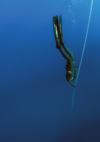
Lead Image © MPower, photocase.com
Trivy security scanner
A Look Inside
Working with containers has become a standard task for administrators, but in addition to plain vanilla container operation, it is also important to take care of security – a task that is sometimes neglected when faced with relatively new container technology. Aqua Security offers the open source Trivy [1] tool, which scans filesystems, Git repositories, and Kubernetes clusters and resources, as well as ensuring container image security. Additionally, the software can find operating system packages and software dependencies (the software bill of materials, SBOM), known security vulnerabilities (CVEs), infrastructure-as-code (IaC) misconfigurations, and sensitive information and passwords.
Installation
Trivy can be installed on all popular Linux distributions and macOS. Alternatively, you can run Trivy as a container. Detailed installation instructions can be found online [1]. Type the commands in Listing 1 to set up the scanner on Debian/Ubuntu.
Listing 1
Installing Trivy
sudo apt-get install wget apt-transport-https gnupg lsb-release wget -qO -https://aquasecurity.github.io/trivy-repo/deb/public.key | sudo apt-key add - echo deb https://aquasecurity.github.io/trivy-repo/deb $(lsb_release -sc) main | sudo tee -a /etc/apt/sources.list.d/trivy.list sudo apt-get update sudo apt-get install trivy
Security Scanning
Once the installation is complete, you can start scanning, which I demonstrate with an example of the well-known NGINX image. First, download the image then start the scan:
...Buy this article as PDF
(incl. VAT)
Buy ADMIN Magazine
Subscribe to our ADMIN Newsletters
Subscribe to our Linux Newsletters
Find Linux and Open Source Jobs
Most Popular
Support Our Work
ADMIN content is made possible with support from readers like you. Please consider contributing when you've found an article to be beneficial.





